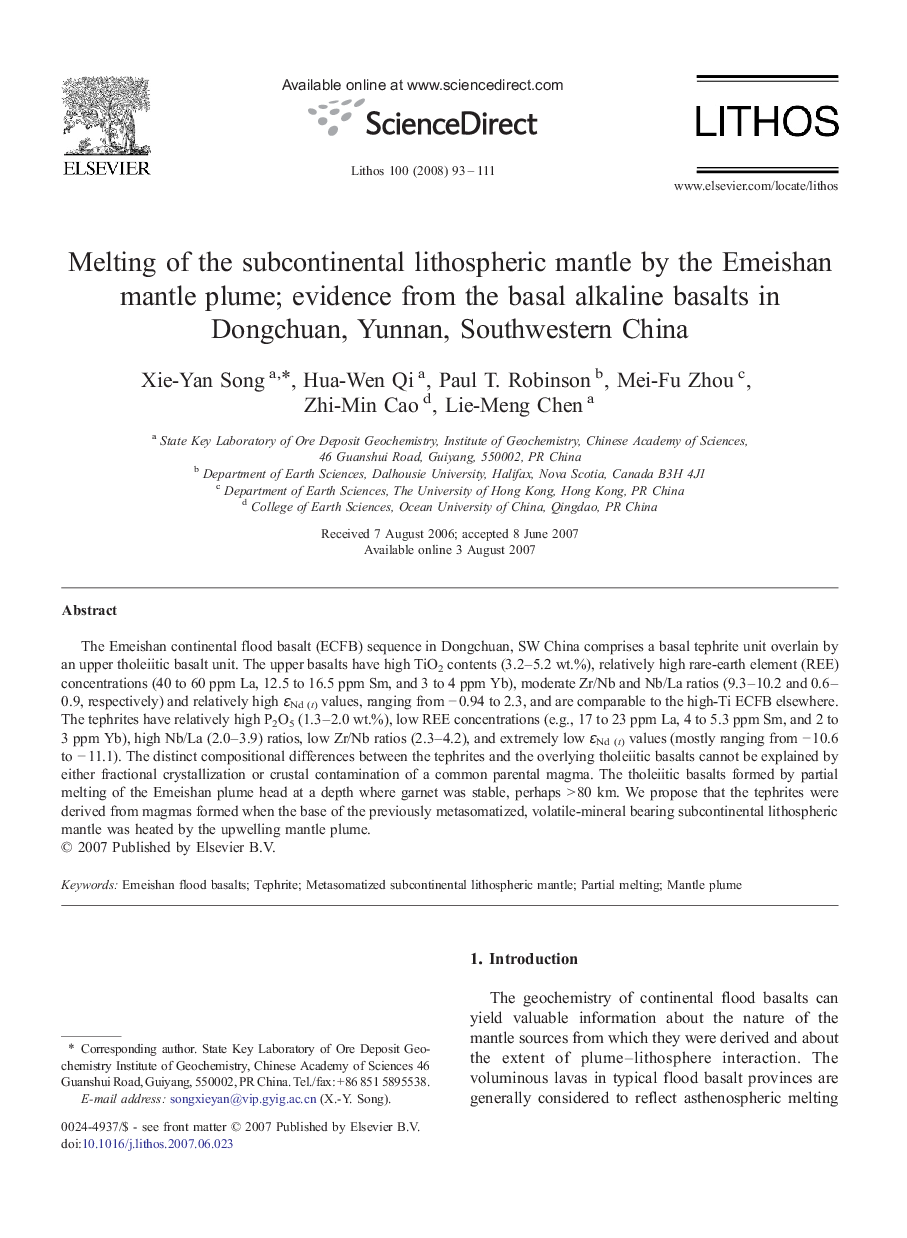| Article ID | Journal | Published Year | Pages | File Type |
|---|---|---|---|---|
| 4717664 | Lithos | 2008 | 19 Pages |
The Emeishan continental flood basalt (ECFB) sequence in Dongchuan, SW China comprises a basal tephrite unit overlain by an upper tholeiitic basalt unit. The upper basalts have high TiO2 contents (3.2–5.2 wt.%), relatively high rare-earth element (REE) concentrations (40 to 60 ppm La, 12.5 to 16.5 ppm Sm, and 3 to 4 ppm Yb), moderate Zr/Nb and Nb/La ratios (9.3–10.2 and 0.6–0.9, respectively) and relatively high ɛNd (t) values, ranging from − 0.94 to 2.3, and are comparable to the high-Ti ECFB elsewhere. The tephrites have relatively high P2O5 (1.3–2.0 wt.%), low REE concentrations (e.g., 17 to 23 ppm La, 4 to 5.3 ppm Sm, and 2 to 3 ppm Yb), high Nb/La (2.0–3.9) ratios, low Zr/Nb ratios (2.3–4.2), and extremely low ɛNd (t) values (mostly ranging from − 10.6 to − 11.1). The distinct compositional differences between the tephrites and the overlying tholeiitic basalts cannot be explained by either fractional crystallization or crustal contamination of a common parental magma. The tholeiitic basalts formed by partial melting of the Emeishan plume head at a depth where garnet was stable, perhaps > 80 km. We propose that the tephrites were derived from magmas formed when the base of the previously metasomatized, volatile-mineral bearing subcontinental lithospheric mantle was heated by the upwelling mantle plume.
